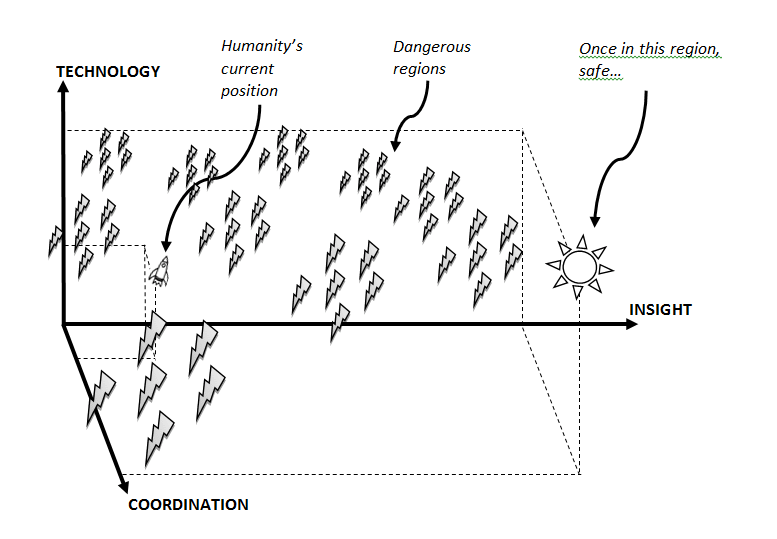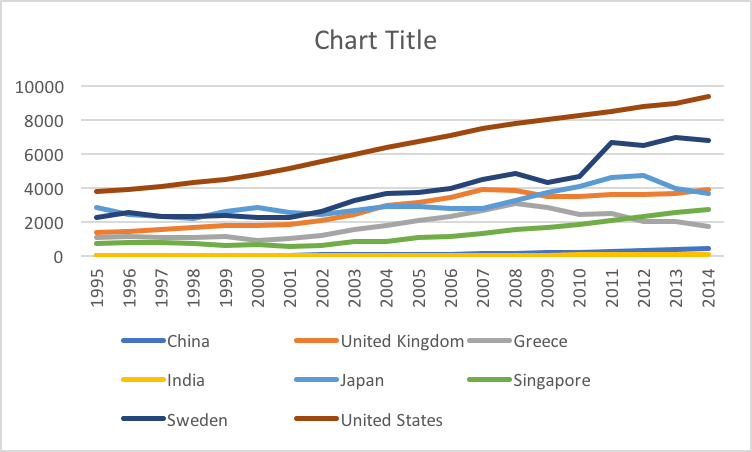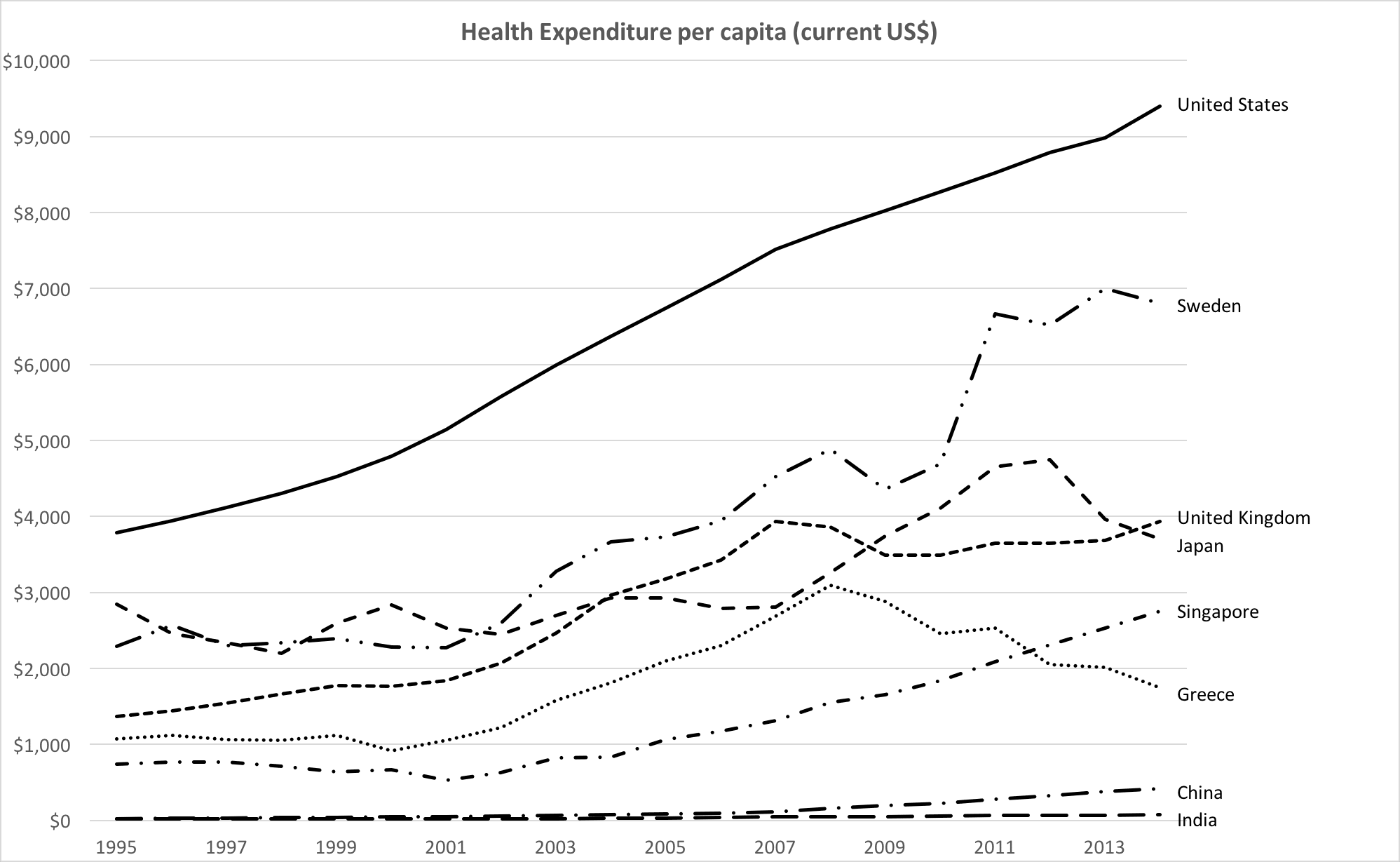I've been lurking on LW since 2013, but only started posting recently. My day job was "analytics broadly construed" although I'm currently exploring applied prio-like roles; my degree is in physics; I used to write on Quora and Substack but stopped, although I'm still on the EA Forum. I'm based in Kuala Lumpur, Malaysia.
Posts
Wiki Contributions
Comments
I think you're right that I missed their point, thanks for pointing it out.
I have had experiences similar to Johannes' anecdote re: ignoring broken glass to not lose fragile threads of thought; they usually entailed extended deep work periods past healthy thresholds for unclear marginal gain, so the quotes above felt personally relevant as guardrails. But also my experiences don't necessarily generalize (as your hypothetical shows).
I'd be curious to know your model, and how it compares to some of John Wentworth's posts on the same IIRC.
These thoughts remind me of something Scott Alexander once wrote - that sometimes he hears someone say true but low status things - and his automatic thoughts are about how the person must be stupid to say something like that, and he has to consciously remind himself that what was said is actually true.
For anyone who's curious, this is what Scott said, in reference to him getting older – I remember it because I noticed the same in myself as I aged too:
I look back on myself now vs. ten years ago and notice I’ve become more cynical, more mellow, and more prone to believing things are complicated. For example: [list of insights] ...
All these seem like convincing insights. But most of them are in the direction of elite opinion. There’s an innocent explanation for this: intellectual elites are pretty wise, so as I grow wiser I converge to their position. But the non-innocent explanation is that I’m not getting wiser, I’m just getting better socialized. ...
I’m pretty embarassed by Parable On Obsolete Ideologies, which I wrote eight years ago. It’s not just that it’s badly written, or that it uses an ill-advised Nazi analogy. It’s that it’s an impassioned plea to jettison everything about religion immediately, because institutions don’t matter and only raw truth-seeking is important. If I imagine myself entering that debate today, I’d be more likely to take the opposite side. But when I read Parable, there’s…nothing really wrong with it. It’s a good argument for what it argues for. I don’t have much to say against it. Ask me what changed my mind, and I’ll shrug, tell you that I guess my priorities shifted. But I can’t help noticing that eight years ago, New Atheism was really popular, and now it’s really unpopular. Or that eight years ago I was in a place where having Richard Dawkins style hyperrationalism was a useful brand, and now I’m (for some reason) in a place where having James C. Scott style intellectual conservativism is a useful brand. A lot of the “wisdom” I’ve “gained” with age is the kind of wisdom that helps me channel James C. Scott instead of Richard Dawkins; how sure am I that this is the right path?
Sometimes I can almost feel this happening. First I believe something is true, and say so. Then I realize it’s considered low-status and cringeworthy. Then I make a principled decision to avoid saying it – or say it only in a very careful way – in order to protect my reputation and ability to participate in society. Then when other people say it, I start looking down on them for being bad at public relations. Then I start looking down on them just for being low-status or cringeworthy. Finally the idea of “low-status” and “bad and wrong” have merged so fully in my mind that the idea seems terrible and ridiculous to me, and I only remember it’s true if I force myself to explicitly consider the question. And even then, it’s in a condescending way, where I feel like the people who say it’s true deserve low status for not being smart enough to remember not to say it. This is endemic, and I try to quash it when I notice it, but I don’t know how many times it’s slipped my notice all the way to the point where I can no longer remember the truth of the original statement.
This was back in 2017.
Holden advised against this:
Jog, don’t sprint. Skeptics of the “most important century” hypothesis will sometimes say things like “If you really believe this, why are you working normal amounts of hours instead of extreme amounts? Why do you have hobbies (or children, etc.) at all?” And I’ve seen a number of people with an attitude like: “THIS IS THE MOST IMPORTANT TIME IN HISTORY. I NEED TO WORK 24/7 AND FORGET ABOUT EVERYTHING ELSE. NO VACATIONS."
I think that’s a very bad idea.
Trying to reduce risks from advanced AI is, as of today, a frustrating and disorienting thing to be doing. It’s very hard to tell whether you’re being helpful (and as I’ve mentioned, many will inevitably think you’re being harmful).
I think the difference between “not mattering,” “doing some good” and “doing enormous good” comes down to how you choose the job, how good at it you are, and how good your judgment is (including what risks you’re most focused on and how you model them). Going “all in” on a particular objective seems bad on these fronts: it poses risks to open-mindedness, to mental health and to good decision-making (I am speaking from observations here, not just theory).
That is, I think it’s a bad idea to try to be 100% emotionally bought into the full stakes of the most important century - I think the stakes are just too high for that to make sense for any human being.
Instead, I think the best way to handle “the fate of humanity is at stake” is probably to find a nice job and work about as hard as you’d work at another job, rather than trying to make heroic efforts to work extra hard. (I criticized heroic efforts in general here.)
I think this basic formula (working in some job that is a good fit, while having some amount of balance in your life) is what’s behind a lot of the most important positive events in history to date, and presents possibly historically large opportunities today.
Also relevant are the takeaways from Thomas Kwa's effectiveness as a conjunction of multipliers, in particular:
- It's more important to have good judgment than to dedicate 100% of your life to an EA project. If output scales linearly with work hours, then you can hit 60% of your maximum possible impact with 60% of your work hours. But if bad judgment causes you to miss one or two multipliers, you could make less than 10% of your maximum impact. (But note that working really hard can sometimes enable multipliers-- see this comment by Mathieu Putz.)
- Aiming for the minimum of self-care is dangerous.
Amateur hour question, if you don't mind: how does your "future of AI teams" compare/contrast with Drexler's CAIS model?
You might also be interested in Scott's 2010 post warning of the 'next-level trap' so to speak: Intellectual Hipsters and Meta-Contrarianism
A person who is somewhat upper-class will conspicuously signal eir wealth by buying difficult-to-obtain goods. A person who is very upper-class will conspicuously signal that ey feels no need to conspicuously signal eir wealth, by deliberately not buying difficult-to-obtain goods.
A person who is somewhat intelligent will conspicuously signal eir intelligence by holding difficult-to-understand opinions. A person who is very intelligent will conspicuously signal that ey feels no need to conspicuously signal eir intelligence, by deliberately not holding difficult-to-understand opinions.
...
Without meaning to imply anything about whether or not any of these positions are correct or not3, the following triads come to mind as connected to an uneducated/contrarian/meta-contrarian divide:
- KKK-style racist / politically correct liberal / "but there are scientifically proven genetic differences"
- misogyny / women's rights movement / men's rights movement
- conservative / liberal / libertarian4
- herbal-spiritual-alternative medicine / conventional medicine / Robin Hanson
- don't care about Africa / give aid to Africa / don't give aid to Africa
- Obama is Muslim / Obama is obviously not Muslim, you idiot / Patri Friedman5
What is interesting about these triads is not that people hold the positions (which could be expected by chance) but that people get deep personal satisfaction from arguing the positions even when their arguments are unlikely to change policy6 - and that people identify with these positions to the point where arguments about them can become personal.
If meta-contrarianism is a real tendency in over-intelligent people, it doesn't mean they should immediately abandon their beliefs; that would just be meta-meta-contrarianism. It means that they need to recognize the meta-contrarian tendency within themselves and so be extra suspicious and careful about a desire to believe something contrary to the prevailing contrarian wisdom, especially if they really enjoy doing so.
In Bostrom's recent interview with Liv Boeree, he said (I'm paraphrasing; you're probably better off listening to what he actually said)
- p(doom)-related
- it's actually gone up for him, not down (contra your guess, unless I misinterpreted you), at least when broadening the scope beyond AI (cf. vulnerable world hypothesis, 34:50 in video)
- re: AI, his prob. dist. has 'narrowed towards the shorter end of the timeline - not a huge surprise, but a bit faster I think' (30:24 in video)
- also re: AI, 'slow and medium-speed takeoffs have gained credibility compared to fast takeoffs'
- he wouldn't overstate any of this
- contrary to people's impression of him, he's always been writing about 'both sides' (doom and utopia)
- e.g. his Letter from Utopia first published in 2005,
- in the past it just seemed more pressing to him to call attention to 'various things that could go wrong so we could avoid these pitfalls and then we'd have plenty of time to think about what to do with this big future'
- this reminded me of this illustration from his old paper introducing the idea of x-risk prevention as global priority:

What's your take on Scott's post?
If I take this claimed strategy as a hypothesis (that radical introspective speedup is possible and trainable), how might I falsify it? I ask because I can already feel myself wanting to believe it's true and personally useful, which is an epistemic red flag. Bonus points if the falsification test isn't high cost (e.g. I don't have to try it for years).
I was wondering about this too. I thought of Eugene Wei writing about Edward Tufte's classic book The Visual Display of Quantitative Information, which he considers "[one of] the most important books I've read". He illustrates with an example, just like dynomight did above, starting with this chart auto-created in Excel:


Wei adds further commentary:
No issues for color blind users, but we're stretching the limits of line styles past where I'm comfortable. To me, it's somewhat easier with the colored lines above to trace different countries across time versus each other, though this monochrome version isn't terrible. Still, this chart reminds me, in many ways, of the monochromatic look of my old Amazon Analytics Package, though it is missing data labels (wouldn't fit here) and has horizontal gridlines (mine never did).
We're running into some of these tradeoffs because of the sheer number of data series in play. Eight is not just enough, it is probably too many. Past some number of data series, it's often easier and cleaner to display these as a series of small multiples. It all depends on the goal and what you're trying to communicate.
At some point, no set of principles is one size fits all, and as the communicator you have to make some subjective judgments. For example, at Amazon, I knew that Joy wanted to see the data values marked on the graph, whenever they could be displayed. She was that detail-oriented. Once I included data values, gridlines were repetitive, and y-axis labels could be reduced in number as well.
Tufte advocates reducing non-data-ink, within reason, and gridlines are often just that. In some cases, if data values aren't possible to fit onto a line graph, I sometimes include gridlines to allow for easy calculation of the relative ratio of one value to another (simply count gridlines between the values), but that's an edge case.
For sharp changes, like an anomalous reversal in the slope of a line graph, I often inserted a note directly on the graph, to anticipate and head off any viewer questions. For example, in the graph above, if fewer data series were included, but Greece remained, one might wish to explain the decline in health expenditures starting in 2008 by adding a note in the plot area near that data point, noting the beginning of the Greek financial crisis (I don't know if that's the actual cause, but whatever the reason or theory, I'd place it there).
If we had company targets for a specific metric, I'd note those on the chart(s) in question as a labeled asymptote. You can never remind people of goals often enough.
And I thought, okay, sounds persuasive and all, but also this feels like Wei/Tufte is pushing their personal aesthetic on me, and I can't really tell the difference (or whether it matters).
Great post, especially the companion piece :)
I'm tangentially reminded of professional modeler & health economist froolow's refactoring of GiveWell's cost-effectiveness models in his A critical review of GiveWell's 2022 cost-effectiveness model (sections 3 and 4), which I think of as complementary to your post in that it teaches-via-case-study how to level up your spreadsheet modeling.
Here's GiveWell's model architecture:
And here's froolow's refactoring:
The difference in micro-level architecture is also quite large:
As someone who's spent a lot of his (short) career building dashboards and models in Google Sheets, and having seen GiveWell's CEAs, I empathized with froolow's remarks here: